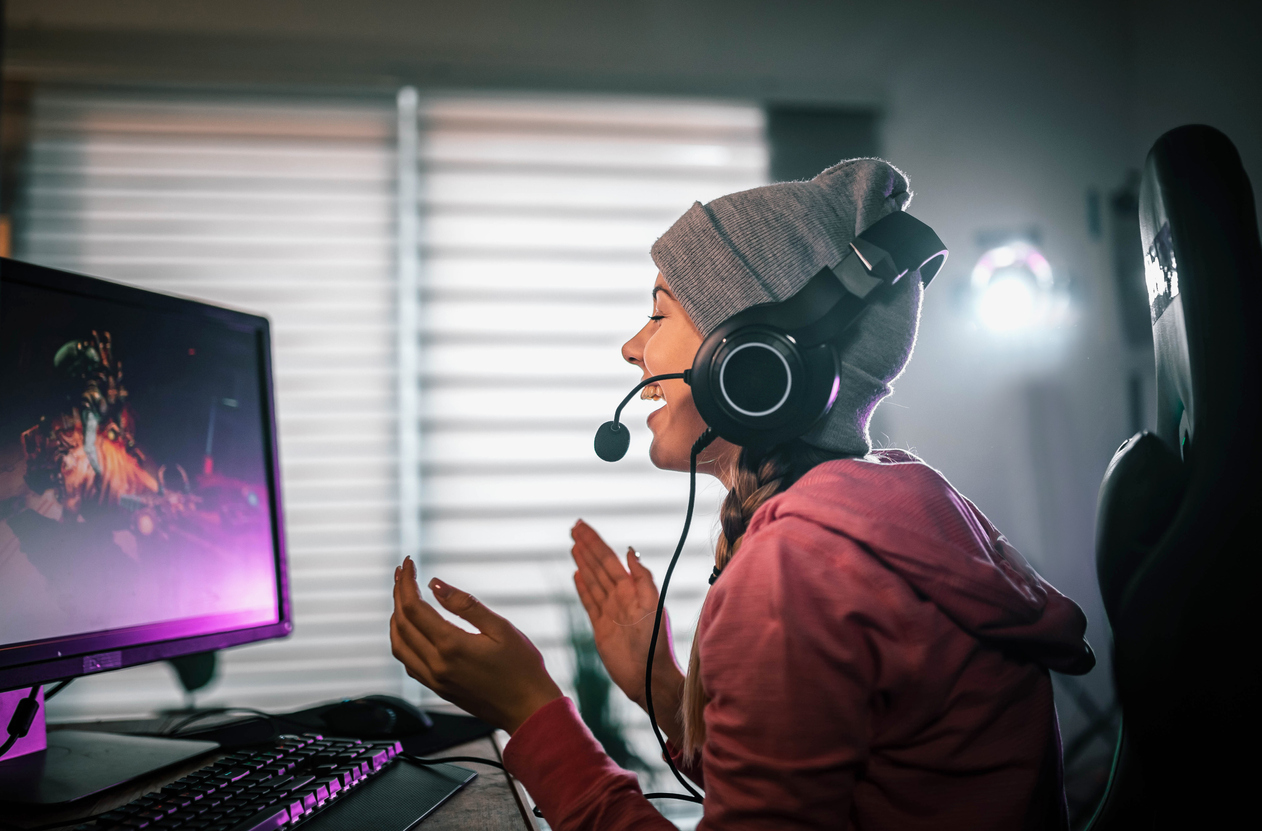
12 Jan How to stream/livestream
How to stream/Livestream
Streaming anything, from podcasting to gaming can be challenging, yet extremely rewarding.
And whilst a challenge can be exciting, there is a lot of fancy jargon thrown about, which can be both confusing and daunting. Here at Outset Studios, we aim to simplify streaming, without sacrificing quality. Find out what to consider when live streaming:
What to consider when starting a stream

Live streaming equipment
First and foremost, when you begin to start live streaming, deciding what streaming equipment you need is one of the first steps you need to take.
Whether you are building your streaming setup at home or streaming from a live stream studio, it is important you know what streaming software and equipment is right for you. So let’s find out what equipment you need to start streaming.
Microphones
If you’re serious about podcasting, or any type of audio recording, you need a good microphone.
The quality of your microphone will determine the quality of your recording and is one of the most important parts of your podcast studio setup. When capturing audio for your podcast, a high-quality mic and mic stand can make the world of difference.
Your mic will have the biggest impact on the quality of sound output, and a high-quality condenser mic will save you hours during post-production. XLR or USB microphones are the best choices – but, XLR mics usually sound more professional.
A MIC STAND
And what good is a mic without its stand? Without an XLR mic stand or boom arm to elevate the microphone in front of your mouth, you’ll struggle to get the best possible sound from your video.
Not only does the vertical alignment positively impact the sound of your voice, but a stand also reduces the chance you will knock something against the mic during recording – causing unwanted noise.
Pop filters or windscreens
Good microphones often make aspects of our speech more audible, making Ps, Ts, Ks and other consonants stand out. To combat this problem, you can use a pop filter or windscreen on your mic so they are softer.
These serve to soften those hard bursts of air, preventing them from producing distorted sounds. This is particularly important when recording vocals, allowing you to speak clearly into the microphone.
Headphones
The right pair of headphones are an essential aspect of any audio recording setup. Good-quality headphones allow you to hear what the microphone hears, improving your mic technique. Wearing headphones allow you to self-regulate your volume and tone during your recording.
And we mean headphones, not earphones. You need headphones that cover your ears to truly eliminate external sounds. If you’re breathing too heavily into the microphone or shouting, headphones will let you listen in private and make changes accordingly.
A video camera
Not essential when just audio streaming, but when it comes to video streaming, a video camera is critical for your streaming setup. The video makes a stream far more engaging, and typically the higher the quality, the higher the engagement.
An audio interface
Modern computers or laptops are not often equipped with audio-in ports anymore, meaning you will need to have an audio interface if you want to connect any recording accessories such as your microphone or headphones.
An audio mixer
An audio mixer allows you to combine multiple sources of audio and mix, and is a great tool for improving your audio quality, especially if you plan to use more than one microphone or play music on your live stream.
Lighting
If you are recording a stream that isn’t just audio, lighting is one of the most important pieces of equipment you need. Although not as important as say a microphone or headphones, if you want to avoid a dark and gloomy recording, lighting is a must.
Furthermore, high-quality, good lighting can reduce post-production video editing hours.
A hardware or software encoder
If all of the above is covered, you still need an encoder solution.
Encoders take the audio, video and graphics you want to live stream, and turns it into data which is then passed into your social media network or streaming services such as Facebook Live or Twitch.
There are two types of encoders: hardware encoders and software encoders. The main difference being hardware encoders refer to a piece of physical equipment you need to hook your set up with, and software encoders refer to a programme that you download and run on your PC or laptop.
Software encoders are the most common solutions and are often free or cheap to use in comparison to hardware encoders. A hardware encoder, on the other hand, can be very costly, but are reliable and powerful – often used by professional game streamers or for business-level streaming. These usually start at around £200 in the UK but can cost upwards of £600.
Do I need to record at a professional live-stream studio?
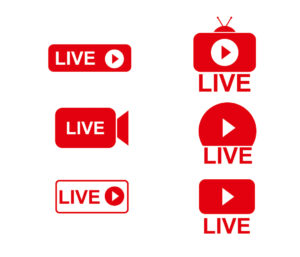
So you know what equipment is needed, but buying all the right equipment can be costly, costing upwards of £10,000 when opting for industry-standard equipment. Of course, you can opt for cheaper equipment, but this could lead to a decline in sound and video quality, and require additional hours of post-production touch-ups.
Hiring a professional podcast studio can be a great option, which allows you to use state-of-the-art equipment for a fraction of the price.
Plus, most professional live stream studios will have trained specialists on call to assist you, especially if you are unfamiliar with some or all of the equipment.
Many people looking at live-streaming also feel like they lack the technical expertise to start live streaming, or perhaps have tried before (with low-quality equipment and software) and have had a mediocre outcome.
The phrase is “a good craftsmen never blames their tools”, but when it comes to live-streaming, there isn’t much that can save your live streams when the equipment isn’t up to scratch.
Recording your live stream in a professional environment enables you to produce high-quality video content, as you not only have on-call technical experts, but the equipment in a good studio will be industry standard. An expert will help you set up the equipment and guide you through the live-streaming process.
Recording your live stream
Now that you have your equipment, and location in check, let’s get to creating your live-stream video. Read on to discover how to actually record your live stream.
- Connect your audio and video sources
The first step to recording your live stream requires you to physically connect your audio and video sources to your main live-streaming setup, which should be your PC or laptop. Connect these sources to your hardware encoder to feed the content into your live stream station or use a capture card if you have a software encoder.
2. Configure your encoder
If you are using a hardware encoder, you will still need to configure the device using an application. Alternatively, if you are using a software encoder you can work via the programme.
You should be able to leave the configuration settings as the default, as the software will automatically adjust settings based on the streaming platform.
Whilst configuring your encoder, you need to consider:
- Resolution
- Bit rate
- Frame rate
It is optimal to live stream with at least a 1080p resolution with 60 fps (frames per second). It is possible to stream with a lower resolution and fps, such as 720p at 30 fps, but the quality will be significantly worse. Your bitrate option selection depends on your resolution and fps, but for 1080p at 60ps, it is recommended between 3.7k-7k bitrate. Find out what bitrate is best using this bitrate calculator.
- Connect to Your LIVE streaming platform
Once you have decided on your live-streaming platform, you will need to enter the streaming key/name and streaming URL that your live-streaming platform provides you, into the encoder. For example, if your live-streaming platform is Facebook Live, you will need to enter this information into your encoder. This will allow the software encoder to send audio and video data to the correct place.
- Check your internet connection and upload speed
Your internet connection and upload speed make a huge impact on your live-streaming video content. An unreliable internet connection equals slow and laggy live-streaming, and if your subscribers are experiencing issues with buffering, audio or video delays, or if you drop frames, that can make for a pretty poor live-streaming event. Watchers may exit your stream quickly after that.
One way in which you can test your upload and internet speed is by using a speed tester. If you are recording from home and your speed is low, or if you are just looking at ways on how to improve it, there are a few steps you can take:
- Upgrade your bandwidth
- Disconnect unused devices connected to your home network
- Use an ethernet connection instead of connecting via WiFi
- Ask any other members of your household to stay offline during your stream
Check to see if your mobile speed is quicker. If so, use your mobile phone’s hotspot
How can Outset Studio help you?
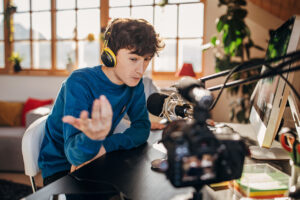
Streaming in a professional environment can completely elevate your live stream. Whatever you’re live streaming, here at Outset Studios we are fully equipped with video recording experts and technicians.
From £70/hr, you can hire our state-of-the-art live streaming studio. Book with us today.

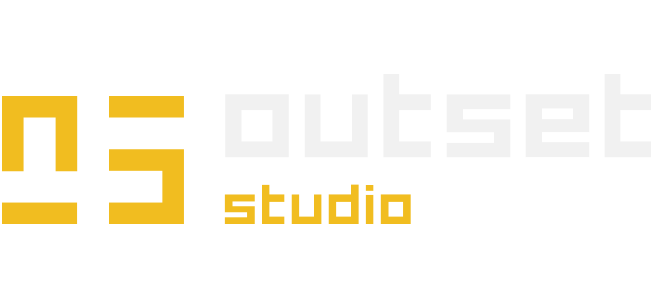





Sorry, the comment form is closed at this time.